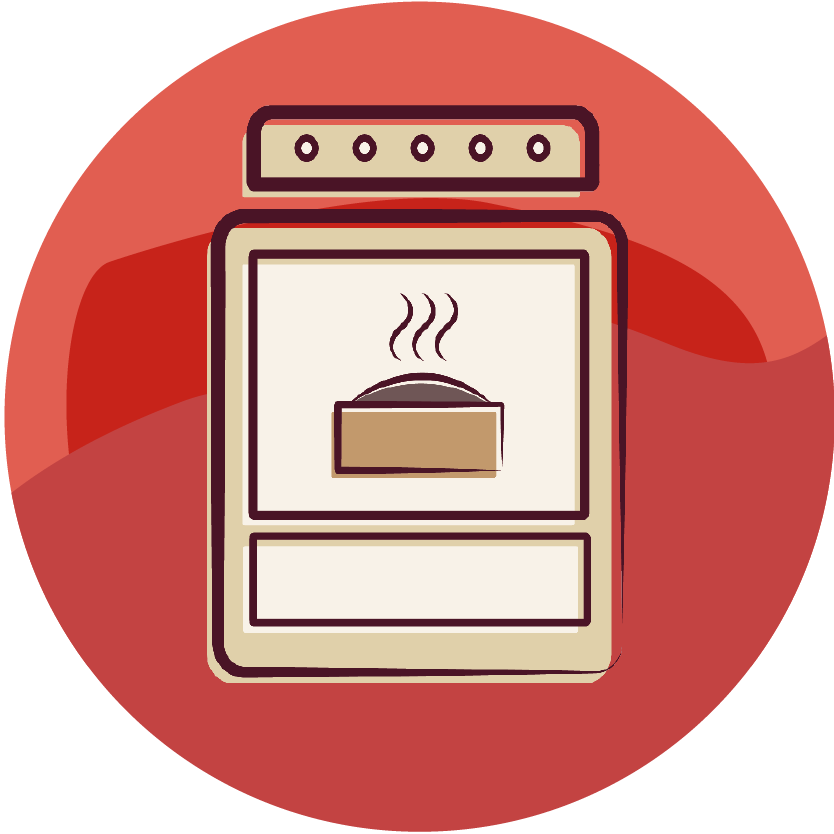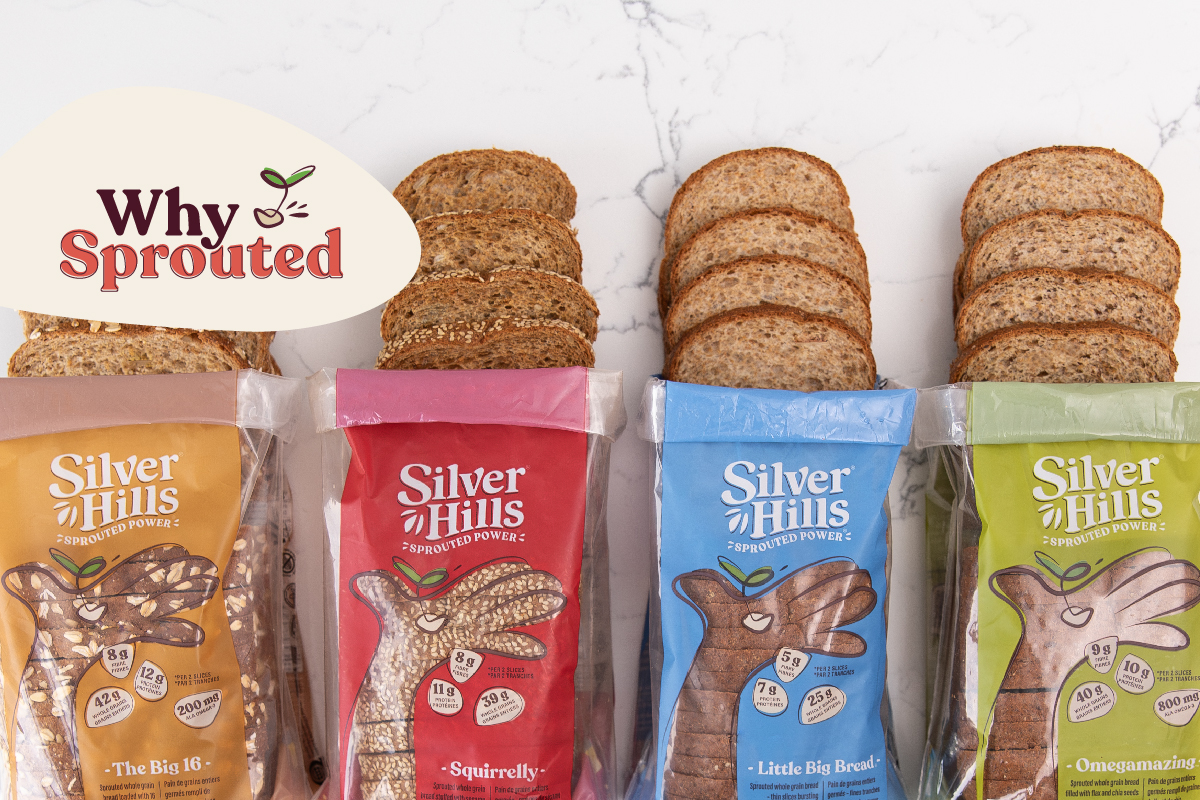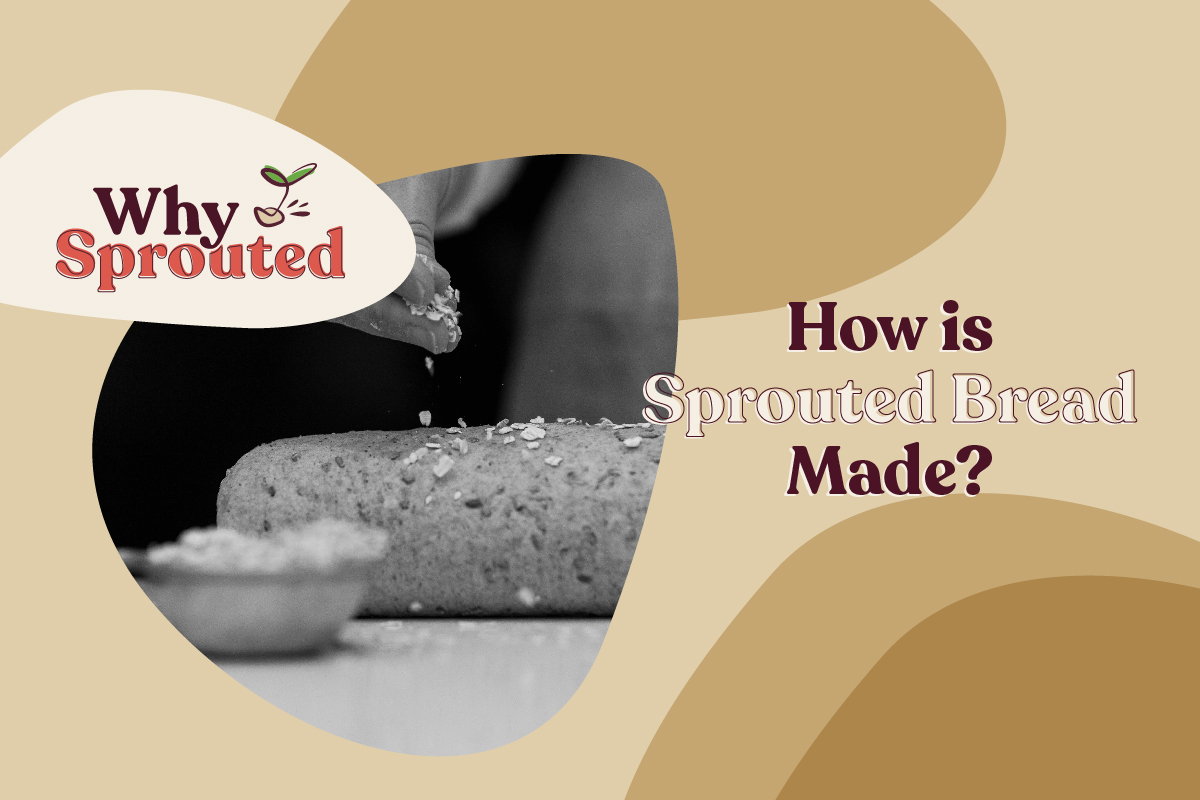What is Sprouted Bread?
Article Whole Grains are Healthy

Whole Grains vs Refined Grains:
Why Whole Grains Win
There’s no question that whole grains are good for you. From Canada,1 the USA,2 and around the world, dietary guidelines all agree—everyone should be eating more whole grains. (And most of us aren’t eating nearly enough of them!)3,4,5
Whole grains are a source of important nutrients, including dietary fibre, B vitamins (folate, thiamine, niacin, vitamin B6, and riboflavin), iron, zinc, manganese, magnesium, copper, phosphorus, selenium, and vitamin A.2 And eating a diet rich in high-fibre foods including whole grains can reduce risk of stroke, colon cancer, heart disease, and type 2 diabetes.3
What Are Grains?
Grains are the edible seeds of cereal grasses and a selection of non-cereal plants.
The wheat family
Including spelt, farro, khorasan, red fife, einkorn, bulgar, barley, rye, triticale, and other varieties.
All types of rice
From long grain to short grain; brown, black, purple, and other colours.
Corn
All colours. And yes popcorn is a whole grain!
Other cereal grains
Non-cereal grains (a.k.a., pseudograins) include:
Oilseeds—like flax, sunflower, and hemp—are not considered grains.
Along with lentils, legumes like chickpeas, and a host of other seeds packed with nutrition, oilseeds are deliciously healthy and partner well with whole grain ingredients in breads and baked goods of all types!)
What Are Whole Grains?
All parts of the grain—the bran, germ, and endosperm—must be included in the same proportion as they are in the grain before any processing is done.6 As long as all the parts are there, grains can be rolled, flaked, crushed, cracked, ground, sprouted, or cooked and be considered whole grains.

The Anatomy of Grains:
Whole Grains vs Refined Grains7
Look at the parts that make up a whole grain and the nutrients each part serves up, and the difference between whole and refined grains is clear.
There’s a time and a place for white flour and white rice—delicate pastries and cucumber rolls wouldn’t be the same without them. But with most of the nutrition in the bran and germ, refined grains leave most of the goodness behind!

1. Bran
The protective outer layer of a whole grain kernel contains:
2. Endosperm
The carbohydrate storehouse, the middle layer of a whole grain kernel contains:
3. Germ
The nutrient dense core of a whole grain kernel contains:
4. Embryonic Axis
The root (radicle) emerges from here once a whole grain kernel begins to sprout.
Up Next in What is Sprouted Bread?
Now that you know the difference between whole grains and refined grains, learn how sprouting makes already healthy whole grains even better!
Silver Hills Bakery’s Sprouted Education Series:

What?
Part 1: The WHAT of Sprouted Whole Grains

Why?
Part 2: The WHY of Sprouted Whole Grains

Try!
Part 3: Now TRY Sprouted Whole Grains



